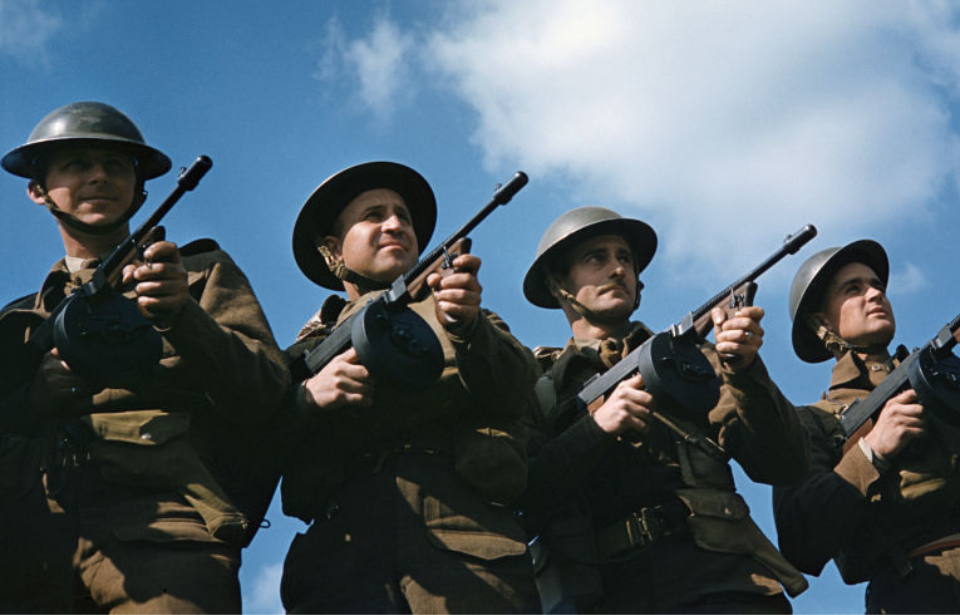When discussing the Tommy Gun, it’s essential to delve into the cultural impact it’s had over the years. Originally designed for the military during World War I, its use peaked in the years following the conflict, especially during the Prohibition era in the United States. This period saw the weapon becoming synonymous with gangsters and law enforcement alike, a testament to its reliability and firepower.
The Tommy Gun’s influence extended beyond the battlefield and the shadowy corners of the criminal underworld. It played a role in shaping the public’s perception of early 20th-century gangland disputes, and has since been portrayed as the weapon of choice for both heroes and villains alike.
Birth of the Thompson submachine gun
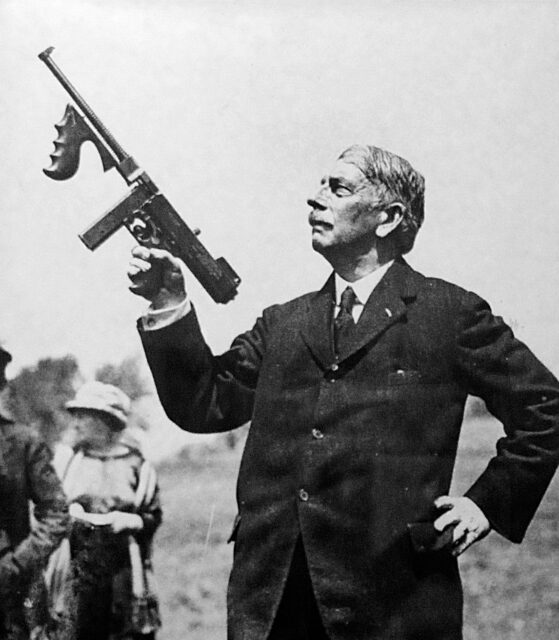
In the early 20th century, the landscape of warfare began to shift dramatically, paving the way for innovations that would forever change the nature of combat. Among these was the introduction of the Thompson submachine gun. Its development was spurred by the need for a compact, automatic weapon that could be easily maneuvered in the tight trenches of World War I.
Brig. Gen. John T. Thompson of the Small Arms Section of the US Army’s Ordnance Department envisioned a “trench sweeper” – a firearm that was capable of clearing enemy trenches with rapid-fire ease. The hope was to replace the bolt-action rifles that were then in use.
His invention, initially known as the “Annihilator,” was completed too late to see action in the conflict, but it laid the groundwork for a new era in military and law enforcement armament as the “first submachine gun.”
Tommy Gun specs.
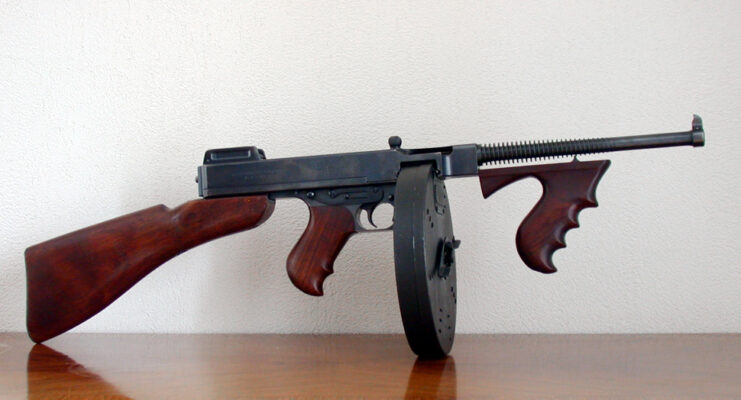
Delving into the mechanics of the Tommy Gun, one can appreciate the ingenuity behind its operation. It made use of a blowback function, a relatively simple, yet effective method. When the trigger is pulled, the energy from the discharged cartridge is used to push the bolt backward, simultaneously ejecting the spent casing and cocking the hammer for the next round. This cycle happens rapidly, enabling the Tommy Gun to achieve a high rate of fire – between 600 and 1,200 RPM, depending on the model.
Its design allowed for both semi-automatic and fully automatic modes, giving operators the flexibility needed in various combat situations. Moreover, the gun’s distinctive features, such as its drum magazine and its vertical foregrip, contributed to its unique appearance and functionality.
The drum magazine, in particular, allowed for an increased ammunition capacity, which provided a significant advantage during prolonged engagements. The vertical foregrip gave better control and stability, making the Tommy Gun easier to handle, despite its rapid rate of fire.
That being said, the weapon did have its issues. Its design was overly bulky, meaning it was on the heavier side. As well, it was common for rounds to rattle within the drum, creating a rather unpleasant noise.
Military personnel weren’t the only ones to equip the Tommy Gun
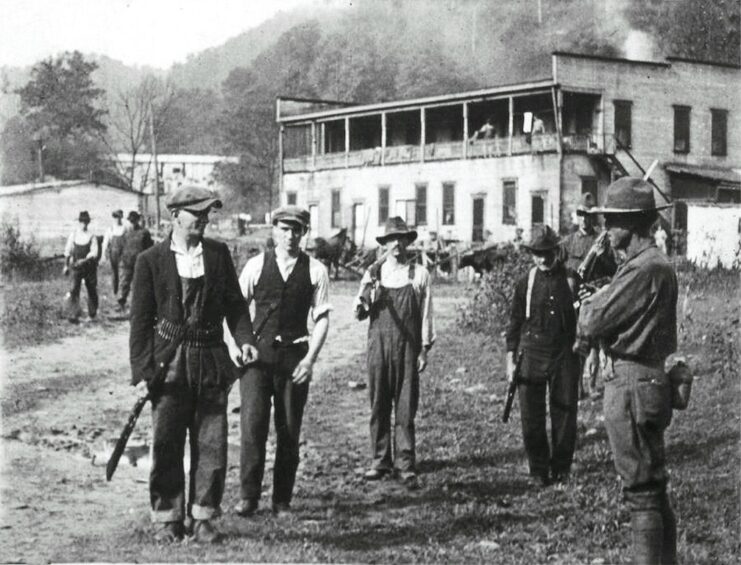
As the Roaring Twenties unfolded, the Tommy Gun found its way into various facets of American life, with one historian going so far as to state it “made the twenties roar.” It was an era when jazz music filled the air, flappers challenged traditional norms and bootleggers ran rampant during Prohibition.
Amid this backdrop, the weapon became synonymous with gangsters, who were often glamorized in newspapers and films of the time. However, it wasn’t just the criminal underworld that recognized the value of the Tommy Gun; law enforcement and private citizens alike sought it for its reliability and firepower. This era highlighted its impact on society, not just as a weapon of war, but as an icon representing the complexities of law, order and rebellion.
The Tommy Gun’s first “combat” use was during the Battle of Blair Mountain in 1921, a labor uprising in the Appalachia region of the United States. This was followed by its adoption by the Irish Republic in the latter part of the Irish War of Independence and by rebels who participated in the 1924 coup d’etat attempt in Estonia.
Gangsters and GIs during Prohibition
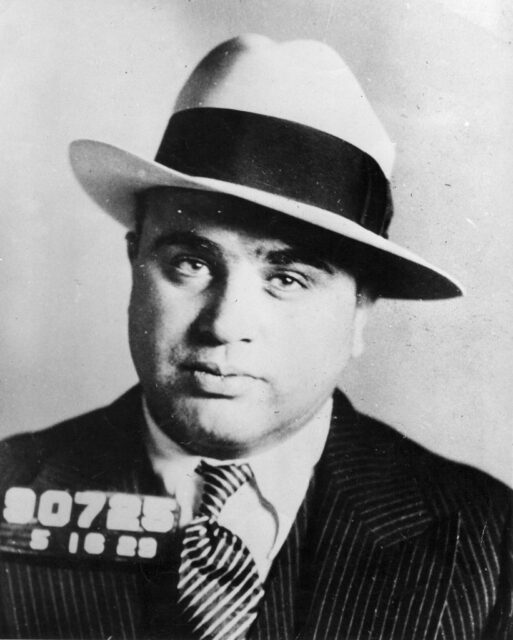
During Prohibition, the Tommy Gun became synonymous with the gangsters who ruled the streets of American cities. These criminals wielded the weapon with a mixture of fear and admiration. It allowed them a certain dominance, enabling them to control their territories with an iron grip.
The gun’s rapid-fire capability, combined with its relatively compact size, made it the perfect tool for the violent skirmishes and confrontations that defined the era. It wasn’t just about the firepower; it was about the message it sent – a stark reminder of the lawlessness that Prohibition had ushered in.
A reliable weapon during the Second World War
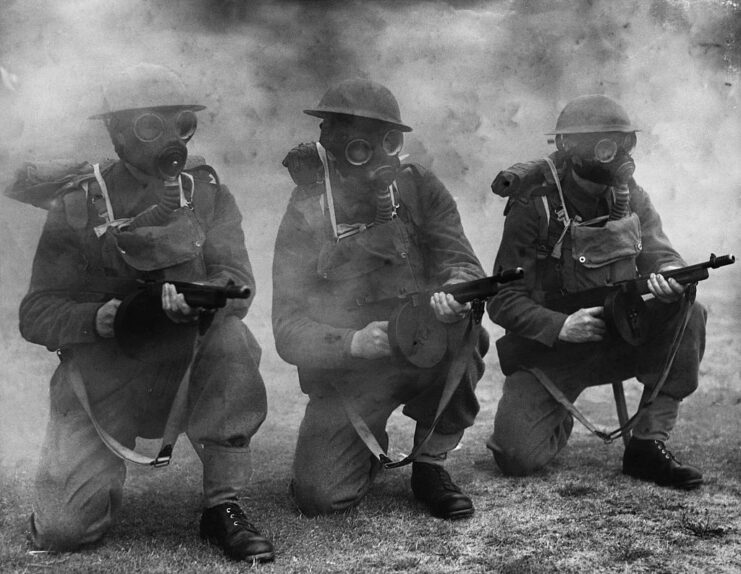
The Tommy Gun became a symbol of American strength and resilience during the Second World War, with the US military using two variants during the conflict: the M1928A1 and the M1/M1A1. Over 1.5 million units were produced during the conflict, with several countries gaining access via the Lend-Lease Act.
Its reliability and rapid-fire capability in close combat situations made it a favorite among Allied troops, especially when paired with the Browning Automatic Rifle. Its design allowed for a high volume of fire, making it particularly effective in trench warfare and urban combat scenarios. Soldiers appreciated the gun for its stopping power and ease of use, qualities that were crucial in the fast-paced and often chaotic battles of the war.
Across Europe and the Pacific, the Tommy Gun played a key role in numerous operations and engagements. It was not only used by infantrymen, but also by paratroopers, Commandos and tank crews, showcasing its versatility on the battlefield. Its impact also extended beyond the immediate tactical advantages it provided. It became a symbol of the determination of the Allied forces, a tool that helped carve out victories in some of the most challenging and decisive battles of the era.
That being said, not everyone preferred the Tommy Gun. In the Pacific Theater, in particular, it was common for New Zealand and Australian troops to drop the weapon for more accurate ones, including the Owen Gun, while British troops serving within the China Burma India Theater preferred the STEN.
Cultural impact of the Tommy Gun
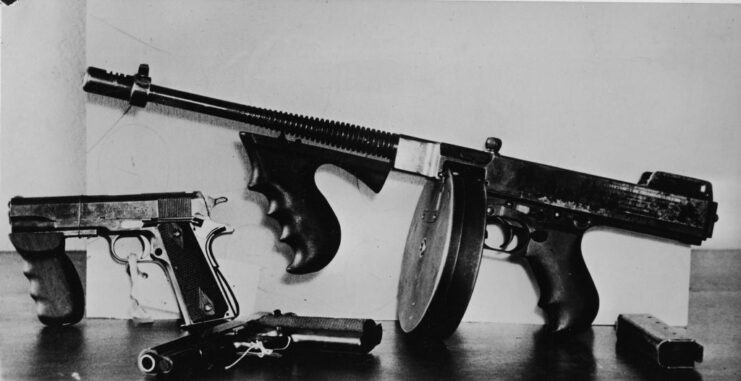
Following the Second World War, the Tommy Gun continued to see action in various conflicts, including the Korean War, the Arab-Israeli War in 1948 and the Cuban Revolution. However, as time went on and better machinery was developed, the gun began to be replaced by other weapons – most notably, the cheaper M3 “Grease Gun.”
Its widespread use allowed the Tommy Gun to leave an indelible mark on popular culture, transcending its original purpose as a military and law enforcement tool. Its distinctive profile and association with figures like Al Capone and John Dillinger cemented its place in the collective imagination, a transformation significantly aided by its portrayal in films and literature as a shorthand for the rebellion and lawlessness of the Prohibition era.
More from us: AK-15: The Russian Assault Rifle That Traces Its Origins Back to the AK-47
The Tommy Gun has also captured the imagination of collectors and enthusiasts worldwide. These individuals go to great lengths to acquire, restore and maintain the weapons, and their efforts aren’t merely for personal satisfaction, but are seen as a tribute to the engineering marvel and the era it represents. Through meticulous care and attention to detail, these aficionados ensure each piece remains a tangible connection to the past.
